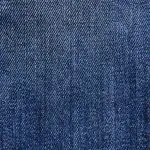Are you curious about the amazing properties of wool fabric? Well, look no further! In this article, we’ll explore the warmth, breathability, moisture-wicking abilities, insulation, durability, elasticity, flame resistance, and odor resistance that make wool such a versatile and sought-after material.
Get ready to discover why wool is the perfect choice for your cozy winter sweaters, breathable summer garments, and everything in between.
So, let’s dive into the fascinating world of wool fabric!
Table of Contents
Warmth
Wool fabric is known for its ability to provide warmth in cold weather. This natural fiber has unique properties that make it an excellent insulator. When you wear wool clothing, it creates a layer of trapped air that helps regulate your body temperature. The crimp in wool fibers creates tiny pockets of air, which act as an insulating barrier against the cold. This feature allows wool to maintain your body’s natural heat, keeping you warm and cozy even in freezing temperatures.
Not only does wool fabric excel at temperature regulation, but it also has a minimal environmental impact. Wool is a sustainable and renewable resource, as it is sheared from sheep without causing harm. Sheep produce wool year after year, making it a renewable source of fiber. Additionally, wool is biodegradable, meaning it can break down naturally without causing harm to the environment.
In contrast to synthetic materials, wool is a natural fabric that does not release harmful microplastics into the environment when washed. It is also naturally flame-resistant, eliminating the need for chemical flame retardants. These factors contribute to the overall environmental friendliness of wool fabric.
Breathability
When it comes to breathability, you’ll find that wool fabric allows air to circulate, keeping you comfortable all day long. Wool has natural moisture-wicking properties that help manage moisture and keep you dry. Here are some key points to understand about the breathability of wool fabric:
-
Natural fibers: Wool is made from natural fibers, which allow air to pass through easily, promoting breathability. This helps prevent the buildup of moisture and heat, keeping you cool and comfortable.
-
Moisture management: Wool has the ability to absorb moisture from your body and release it into the air, a process known as moisture-wicking. This helps regulate your body temperature and prevent the feeling of clamminess.
-
Thermal regulation: Wool fabric has excellent insulation properties, meaning it can keep you warm in cold weather and cool in hot weather. It helps maintain a comfortable body temperature by allowing excess heat and moisture to escape.
-
Comfort level: The breathability of wool fabric contributes to its overall comfort level. It feels soft and smooth against your skin, and its ability to regulate moisture and temperature helps prevent discomfort and irritation.
Moisture-wicking
One of the benefits of wool is that it helps keep you dry by wicking away moisture from your body. Wool has excellent sweat absorption properties, making it an ideal fabric for active individuals or those who tend to sweat a lot. The structure of wool fibers allows them to absorb moisture in the form of sweat and move it away from your skin, keeping you dry and comfortable. This is because wool fibers have a high water absorption capacity, allowing them to hold a significant amount of moisture without feeling wet.
In addition to its sweat absorption capabilities, wool also has quick drying properties. When moisture is absorbed by wool fibers, it spreads across a larger surface area, which increases the rate of evaporation. This means that the moisture dries quickly, preventing the fabric from feeling damp or heavy.
The unique structure of wool helps to regulate body temperature by absorbing excess moisture when you sweat and releasing it into the air when the environment is drier. This moisture-wicking ability of wool makes it a popular choice for athletic wear, outdoor clothing, and even bedding. So, if you want to stay dry and comfortable, choose wool for its natural moisture-wicking and quick drying properties.
Insulation
If you’re looking to stay warm in cold weather, consider the insulation capabilities of wool. Wool is a natural fiber that is known for its excellent thermo regulation properties. It has the ability to keep you warm when it’s cold outside and cool when it’s hot.
This is because wool fibers have air pockets that trap heat and prevent it from escaping, creating a warm layer of insulation around your body. Additionally, wool is a sustainable material. It comes from sheep, which can be shorn multiple times throughout their lives, providing a continuous source of wool.
Unlike synthetic materials, wool is biodegradable and does not contribute to pollution. It is also a renewable resource, as sheep can be raised and shorn again and again. Furthermore, wool is a durable fabric that can last for years if properly cared for. It is resistant to wrinkles, stains, and odors, making it a practical choice for clothing and home textiles.
Durability
When it comes to durability, you’ll be pleased to know that long-lasting fibers are a key characteristic of this fabric.
Not only are these fibers resistant to wear, but they also have the ability to retain their shape well over time.
This means that you can rely on this fabric to withstand the test of time and maintain its quality, making it a great choice for long-lasting and durable garments.
Long-Lasting Fibers
Wool fabric is known for its durability and ability to remain intact for a long time. The longevity of wool fibers is due to their unique structure and properties.
Here are three reasons why wool fabric is known for its long-lasting qualities:
-
Natural resilience: Wool fibers have a natural crimp that allows them to bounce back to their original shape even after being stretched or compressed. This resilience helps the fabric maintain its appearance and shape over time.
-
Resistance to wrinkles: Wool fabric has a natural resistance to wrinkles, making it a great choice for garments that need to maintain a crisp and neat look. This quality minimizes the need for ironing or pressing, saving time and energy.
-
Resistance to wear and tear: The strong and durable nature of wool fibers makes them resistant to wear and tear. This means that wool fabric can withstand regular use and maintain its quality and integrity for a long time.
Wool fabric’s longevity and sustainability make it a great investment for anyone looking for durable and environmentally friendly clothing options.
Resistant to Wear
In addition to its long-lasting fibers, wool fabric is also known for its resilience and comfort. Wool fibers have a natural elasticity that allows them to bounce back to their original shape even after being stretched or compressed. This makes wool garments resistant to wear and tear, ensuring that they can withstand the test of time.
Furthermore, wool is an excellent insulator, providing warmth and comfort in both cold and warm climates. It has the ability to regulate body temperature by absorbing moisture from the body and releasing it into the air, keeping you dry and comfortable.
To give you a better understanding of the properties of wool fabric, here is a table that summarizes its key features:
| Properties of Wool Fabric |
|---|
| Resilient |
| Comfortable |
| Long-lasting fibers |
| Insulating |
| Moisture-wicking |
Retains Shape Well
You’ll love how wool garments retain their shape well, allowing you to look stylish and put-together all day long. Wool is known for its ability to bounce back after being stretched or wrinkled, thanks to its natural elasticity.
Here are some key points about how wool retains its shape:
- Wool fibers have a natural crimp that helps them hold their shape, even after repeated wear.
- The unique structure of wool allows it to resist wrinkles, so you can look polished and neat without having to constantly iron or steam your clothes.
In addition to its shape-retaining properties, wool also retains its softness over time. This is because wool fibers have a natural protective coating called lanolin, which keeps them soft and supple. Unlike synthetic fabrics, which can become stiff or rough with wear, wool remains soft and comfortable against your skin.
Its natural fiber benefits make it a versatile and durable choice for your wardrobe.
Elasticity
When it comes to elasticity, wool fabric offers a range of desirable properties. It has a natural stretch and bounce, allowing it to conform to your body shape without losing its original form.
Additionally, wool retains its shape well over time, making it a durable option for clothing and other textiles.
Stretch and Bounce
Wool fabric has a natural stretch and bounce that makes it highly versatile. When you wear wool clothing, you’ll immediately notice its exceptional comfort and softness against your skin. This is due to the unique structure of wool fibers, which have a crimped texture.
The crimp allows the fabric to stretch and then bounce back to its original shape, providing a snug fit without feeling restrictive. This natural elasticity also makes wool garments resistant to wrinkles, ensuring they maintain their shape and appearance over time.
Additionally, wool possesses hypoallergenic properties, making it an excellent choice for individuals with sensitive skin or allergies. The fibers naturally repel dust mites and other allergens, creating a healthier and more comfortable environment for you to enjoy.
Retains Shape Well
Wool’s natural elasticity allows it to maintain its shape well over time, ensuring a snug fit without feeling restrictive. This is due to the unique structure of wool fibers, which have a crimped and spiraled shape. As a result, wool garments are less likely to stretch out or sag, making them highly durable.
Additionally, wool retains its softness even after repeated wear and washing. This is because wool fibers have a natural protective layer called lanolin, which helps to keep the fabric soft and supple.
Furthermore, wool is hypoallergenic, making it a great choice for individuals with sensitive skin or allergies. The fibers are resistant to dust mites, mold, and mildew, reducing the risk of allergic reactions.
Overall, wool’s ability to retain shape, softness, and hypoallergenic properties make it a versatile and comfortable fabric option.
Resilient and Flexible
You’ll love how resilient and flexible wool fabric is, allowing you to move freely without any restrictions. Wool is known for its remarkable ability to bounce back to its original shape after being stretched or compressed. This resilience is due to the unique structure of wool fibers, which have a natural crimp that helps them maintain their shape.
Additionally, wool is incredibly versatile, making it suitable for a wide range of applications. It can be spun into fine yarns for delicate garments or thick yarns for cozy blankets. Wool also has excellent insulating properties, keeping you warm in cold weather and cool in warm weather. Its natural elasticity and breathability make it a favorite choice for activewear, outdoor gear, and even upholstery.
Overall, wool’s resilience and versatility make it a fantastic fabric option for various purposes.
Flame Resistance
It’s important to note that wool fabric is naturally flame resistant. This unique property makes it an excellent choice for applications where fire safety is a concern. Unlike other fabrics that may catch fire easily, wool has inherent flame retardancy that provides an added layer of protection.
To further understand the flame resistance of wool fabric, let’s take a look at the following table:
| Property | Description |
|---|---|
| Flame Retardancy | Wool fabric has a high resistance to catching fire and is difficult to ignite. |
| Self-Extinguishing | Once the flame is removed, wool fabric will stop burning on its own. |
| Minimal Heat Release | Wool fabric does not release a significant amount of heat during combustion. |
These properties make wool fabric a safe choice in various applications, such as clothing, upholstery, and bedding. In case of a fire, wool fabric can provide valuable time for evacuation and minimize the risk of injuries.
It’s worth noting that while wool fabric is naturally flame resistant, it is still important to follow proper fire safety procedures and regulations. Regular testing and maintenance of fire safety equipment, along with proper handling and storage of flammable materials, are essential to ensure overall fire safety.
Odor Resistance
When you wear wool, you’ll notice that it naturally resists odors, making it a great choice for garments that stay fresh even after extended wear. This odor resistance is due to the unique properties of wool fibers.
Here are some key points to consider:
-
Wool has antimicrobial properties: Wool contains lanolin, a natural wax that helps prevent the growth of bacteria and fungi. This antimicrobial property inhibits the formation of unpleasant odors, keeping your garments smelling fresh for longer periods.
-
Wool absorbs moisture: Wool fibers can absorb up to 30% of their weight in moisture without feeling wet. This moisture absorption helps to wick away sweat and prevent the buildup of odor-causing bacteria on the fabric.
-
Wool is naturally breathable: The structure of wool fibers allows air to circulate freely, reducing the potential for trapped odors. This breathability also helps to regulate body temperature, making wool garments comfortable to wear in various climates.
-
Wool is allergen resistant: Wool is hypoallergenic and less likely to cause skin irritations or allergies compared to synthetic materials. It is also resistant to dust mites, making it a great choice for individuals with allergies or sensitivities.
Conclusion
In conclusion, wool fabric possesses a multitude of remarkable properties that make it a top choice for numerous applications.
Its inherent warmth ensures coziness during chilly weather, while its breathability allows air circulation and prevents overheating.
With its moisture-wicking abilities, wool fabric effectively absorbs and evaporates sweat, keeping the wearer dry.
Furthermore, its insulation capabilities make it an excellent choice for cold climates.
The durability and elasticity of wool fabric ensure its longevity and comfortable fit.
Additionally, its flame and odor resistance make it a safe and hygienic option.
Overall, wool fabric’s properties make it a versatile and practical choice for various clothing and textile needs.
- Is Silk a Nonwoven Fabric? - July 11, 2025
- Is Cotton Typically Woven or Nonwoven? - July 11, 2025
- Is Chenille a Woven or Nonwoven Fabric? - July 11, 2025






